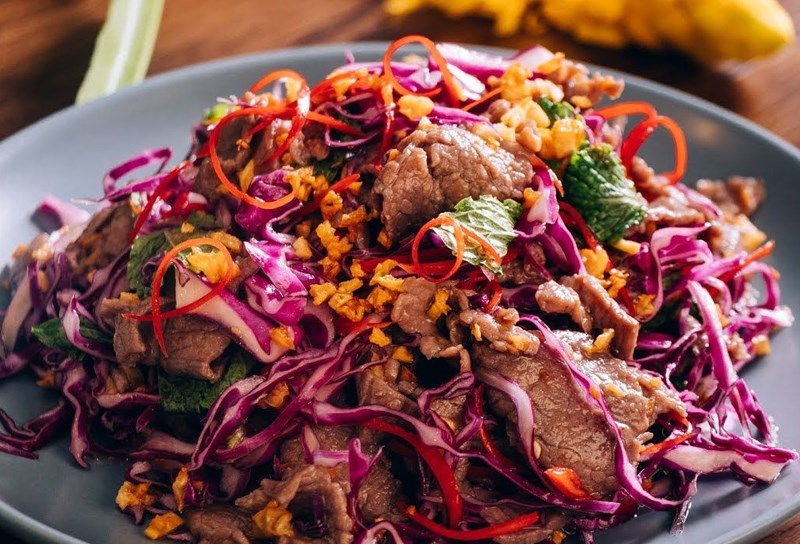 News
News
Purple cabbage is a type of cabbage with dark red or purple leaves. Depending on the pH of the soil, the leaves of cabbage will have different colors. In acidic soils, leaves will be redder, in neutral soils, leaves will be more purple, while alkaline soils will produce greenish-yellow mustards.
When cooking the cabbage will turn blue, if you want to keep the color of the cabbage, you should add vinegar or acidic fruit like lemon.
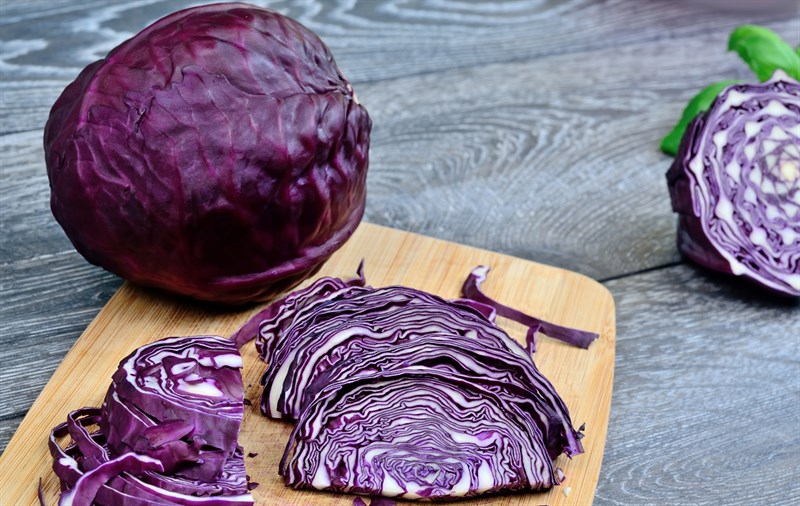
Purple cabbage is low in calories but a good source of fiber and vitamins A , C , K and B6. In addition, it contains small amounts of other vitamins and minerals.
According to FoodData Central , 89 grams of chopped raw purple cabbage contains:
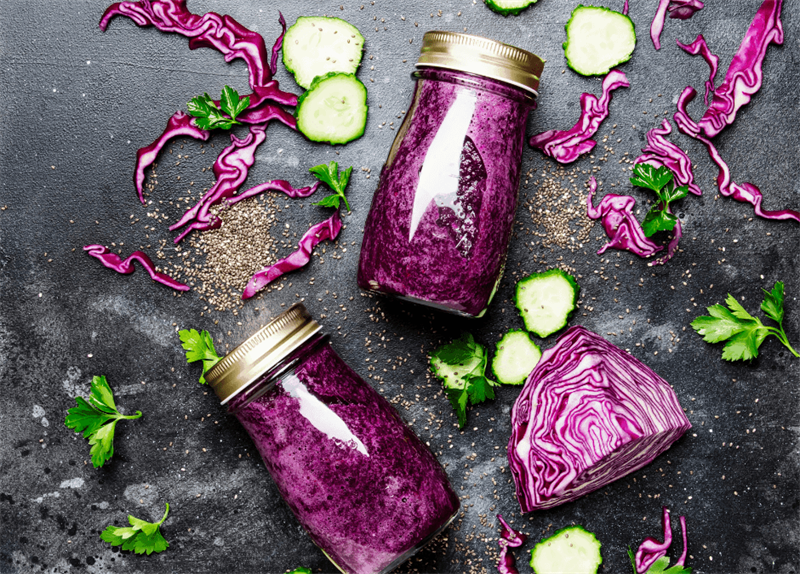
Antioxidants present in cabbage include vitamin C, carotenoids and flavonoid antioxidants . The composition of these substances in purple cabbage is actually more than that of green cabbage.
Purple cabbage also contains sulforaphane , a sulfur-rich compound that is formed when raw cabbage is cut or crushed. Sulforaphane has beneficial effects on heart health and cancer.

Purple cabbage can help fight inflammation, which is believed to be the cause of many diseases.
One test-tube study using an artificial model of the human gut found that certain types of purple cabbage reduced markers of intestinal inflammation by 22 to 40 percent.
Interestingly, applying cabbage leaves to the skin also reduces inflammation. For example, adults with arthritis who wrapped their knees in cabbage leaves once daily reported feeling significantly less pain at the end of the 4-week study. However, cabbage wraps are less effective for pain relief than topical gels and topical medications.
In addition, cabbage leaves are effective in reducing pain, swelling and mastitis due to increased milk supply and blood flow in the early postpartum period.

Purple cabbage is a rich source of anthocyanins, which are beneficial plant compounds that may reduce the risk of heart disease .
According to Pudmez Central, a large study found that women who regularly ate large amounts of anthocyanin-rich foods had an 11-32% reduced risk of heart attack compared with those who ate the least of these foods. Higher anthocyanin intake may also have a beneficial effect on lowering blood pressure and reducing the risk of heart disease .
Purple cabbage contains more than 36 types of anthocyanins making it an excellent source of heart-healthy anthocyanins .

Purple cabbage contains a number of bone- healthy nutrients , including vitamins C and K, as well as small amounts of calcium, manganese, and zinc. For example, 1 cup (89 grams) of raw purple cabbage contains about 56% of the DV for vitamin C, which plays a role in bone formation and helps protect your bone cells from damage.
Purple cabbage is also rich in vitamin K1, providing more than a quarter of the DV per cup (89 grams). Vitamin K1 is mainly found in plant foods, such as leafy green vegetables and cruciferous vegetables. This distinguishes it from vitamin K2, which is found in animal products and fermented foods.

Purple cabbage contains sulforaphane and anthocyanins - two compounds with anti-cancer properties.
According to Pudmez Central, research on high consumption of cruciferous vegetables, including cabbage, found that they can reduce the risk of colon cancer by 18 percent . Diets rich in cruciferous vegetables have also been linked to a reduced risk of breast cancer .
Furthermore, there is evidence that the sulforaphane found in purple cabbage and other cruciferous vegetables can help kill cancer cells or stop them from growing and spreading.
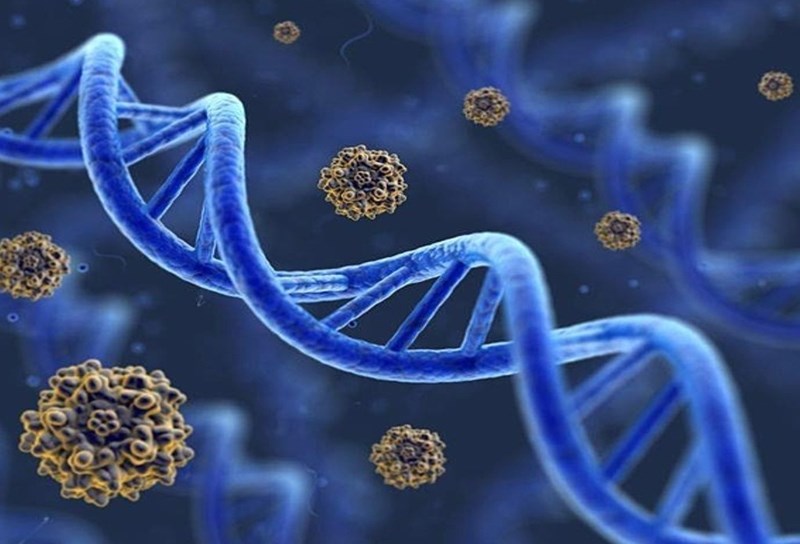
Cabbage is also a good source of fiber, which keeps your intestines healthy and makes it easier to digest food.
Insoluble fiber makes up about 70% of the total fiber in cabbage. It adds bulk to stool and helps food move through your intestines more easily, reducing the risk of constipation ; The other 30% is soluble fiber, which provides food for the beneficial bacteria that live in your gut.
In turn, these friendly bacteria produce short-chain fatty acids (SCFAs), such as acetate, butyrate, and propionate, which feed the cells in your gut.

You should choose to buy cabbage with firm hand, tightly rolled leaves, small stalks that do not crack, do not turn brown.
Choose corn with dark purple leaves, crisp, hard leaves, fresh, without yellow leaves and brown spots.
Do not choose cabbages that are crushed, have signs of viscous flow, or are eaten by insects.
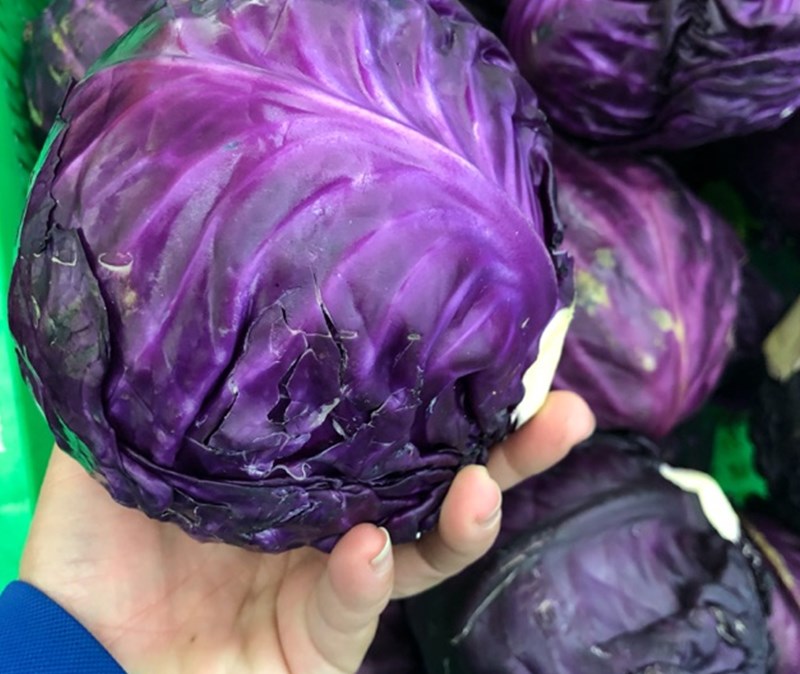
You should use plastic wrap to cover the cut part. Then put the cabbage in a plastic bag with a few vents and put it in the refrigerator.
You should only store in the refrigerator for a few days, not too long, the cabbage will not taste good and lose nutrients.
You should only cut it when eating, not pre-cut it because this will make the cabbage lose nutrients and no longer retain its delicious crunch.
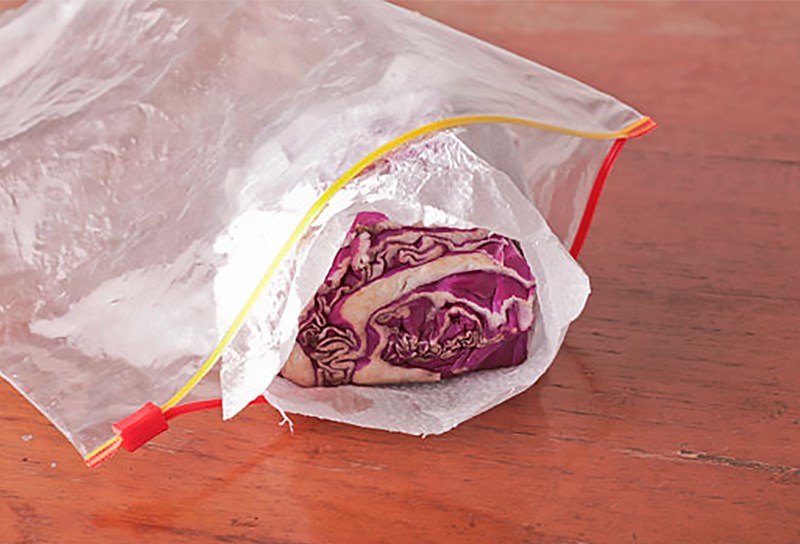
Using purple cabbage to make a delicious vegetarian salad, crispy sweet cabbage will make your vegetarian menu richer and more nutritious.
See details: How to make delicious and super simple vegetarian purple cabbage salad
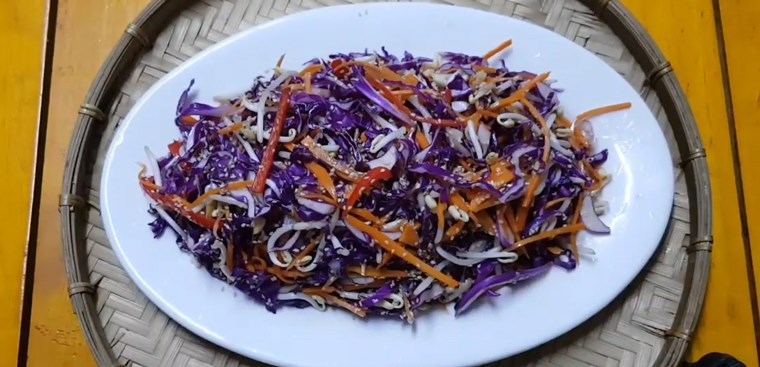
Crispy sweet purple cabbage salad, mixed with aromatic mayonnaise sauce, will be an attractive and simple dish for a nutritious family meal. Click now to see the recipe!
See details: How to make delicious crispy, non-pungent, purple cabbage salad with mayonnaise
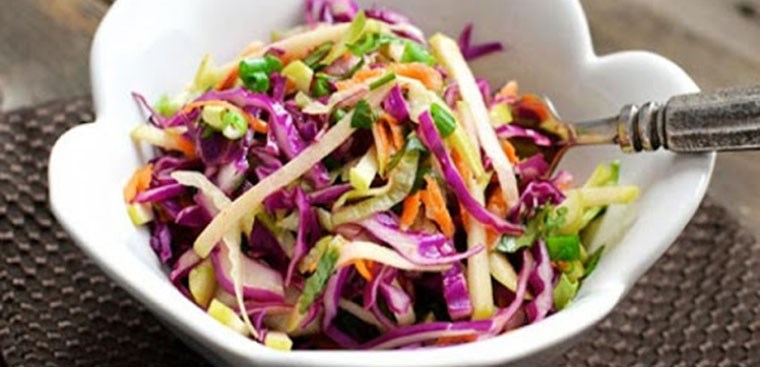
Stir-fried purple cabbage with meat or sautéed with sausages gives you an attractive taste with crispy cabbage, soft and sweet meat to make family meals more abundant.
See details: 3 Ways to make delicious, simple and easy-to-make purple cabbage with meat at home
